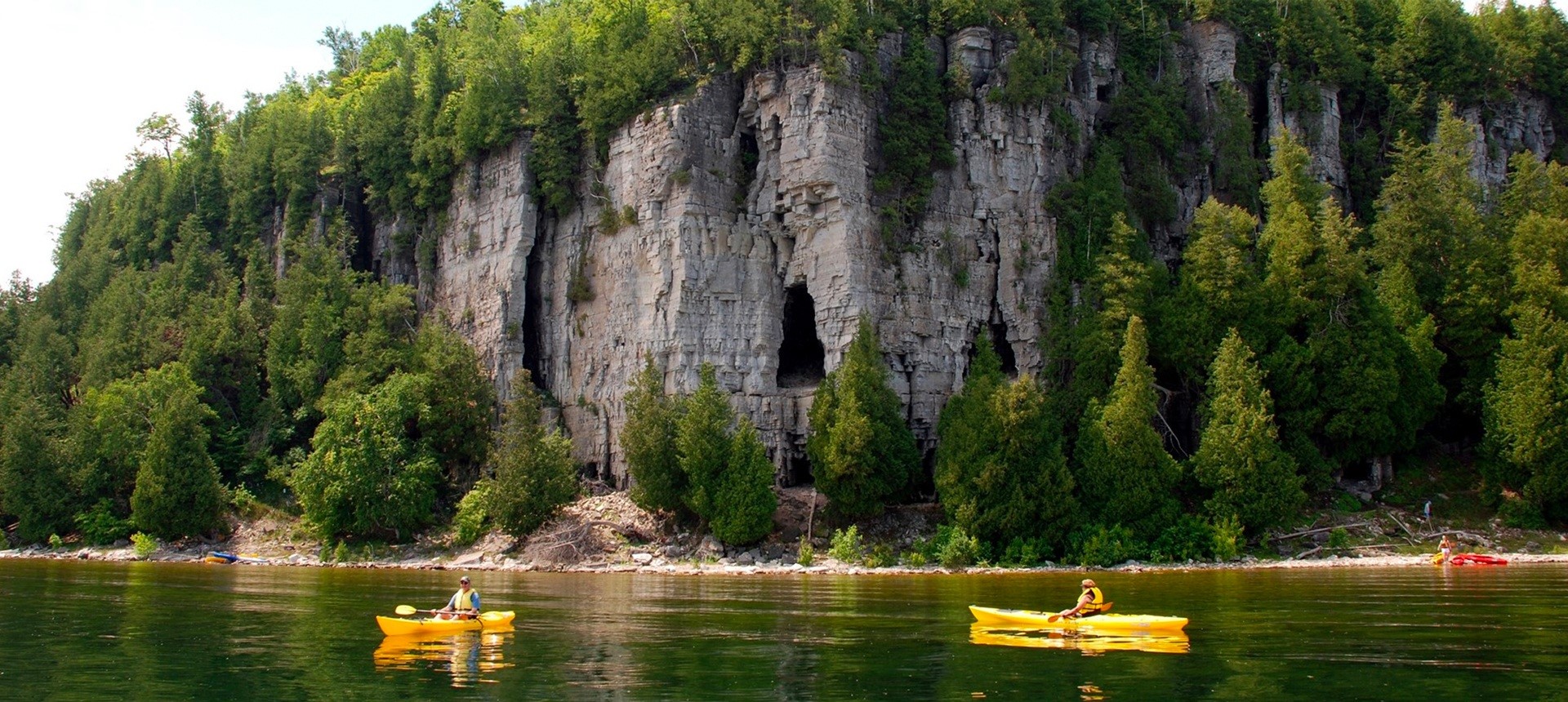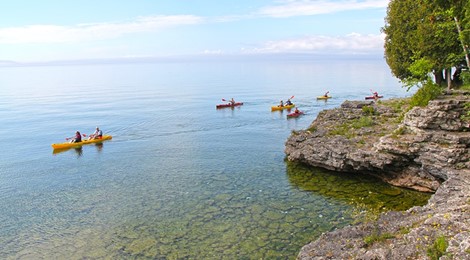Niagara Escarpment
The Niagara Escarpment is a relic of Wisconsin's glacial period when enormous frozen glaciers up to 2-miles thick moved across the land, eroding much of the top layer of earth, carving out the Great Lakes Basin, and exposing hard dolomite rock. That dolomite and its dramatic cliffs, edges, and caves—as well the hundreds of rare and exquisite plant and animal life that it houses—are what bring many eco-tourists to the Door County area. Via kayak or hiking trail, visitors can get up close to the escarpment and marvel at the enormity of the rock mass, its geological significance, and its otherworldly beauty.

The escarpment is home to a protected forest that's home to more than 200 rare plants and animals as well as several endangered species.
Got it!The Green Bay side of the escarpment has exposed rock cliffs as high as 250-feet tall.
Got it!The escarpment begins in New York and runs through Niagara Falls, Ontario, the Bruce Peninsula, the UP, Door County, and Lake Winnebago, running all the way to its western terminus in northern Illinois.
Got it!The 650-mile Niagara Escarpment is the geological foundation of Door County and the reason the cliffs and shorelines here are so tall, jagged, and imposing.
Got it!Some of the Midwest's oldest trees can be found on or along the escarpment, and one just outside of Green Bay, WI is 1,300 years old.
Got it!
Whitefish en Papillote
Fresh olives and tomatoes combined with bright lemon and salty capers give this classic Lake Michigan catch a Mediterranean twist, a perfect followup to a day spent on exploring cliffs and caves.
Paddling a Kayak
Lapping waves, towering limestone cliffs, a paddle, and you: enjoy the peaceful sounds of paddling the shoreline.

Cave Point County Park
The best way to experience the escarpment is via hiking at Cave Point County Park or kayaking along the shoreline.


















